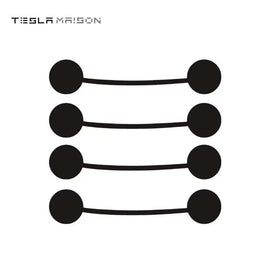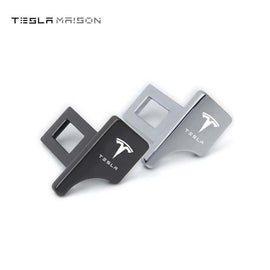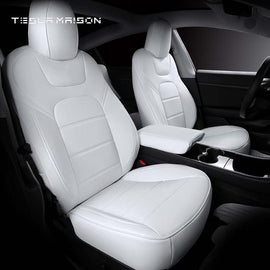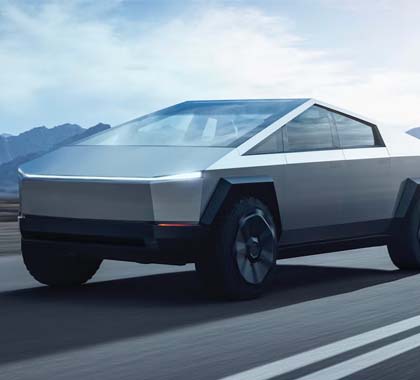We live in an extremely mobile society. We have constant access to transport as part of this mobility. What would we do without our cars, after all? As a society, we tend to favor certain models and makes. However, with the increased concern about air pollution, electric cars have become a popular choice. The question is:
Tesla - Are they worth all the hype? Teslas have proven to be a good choice, and they reduce the carbon footprint of individual cars. They also reduce dependence on fossil fuels like gasoline and oil. These two facts could be enough to show that Teslas may indeed be worth the investment.
Some people are always on the cutting edge, while others stick to their comfort zone. Another person's Mustang is someone else's Tesla. It's clear that Tesla is becoming more popular. The car is more visible on the road.
Why is Tesla so Popular?
Between the fourth quarter of 2015. and the third-quarter of 2019., over 500,000 Teslas were sold. For context, the top 20 electric cars sold in 2018 were nearly 25% Teslas. Nissan, VW, BMW and all other manufacturers of electric vehicles are left in the dust.
Autopilot is one of Tesla's most popular features.
Tesla's autopilot system is constantly evolving. Elon Musk has a vision that he hopes will one day allow drivers to "request" or "summon their car" from across the nation, and have it automatically charge on the way.
Autopilot standard features include:
- Autosteer. The car will take control of the steering when driving on roads that have a center divider. You still need to be aware of what is going on around you. However, you will have more time to eat on the road.
- Auto braking. If your car detects danger, like a person walking into the road directly in front of you - the brakes will be automatically engaged to prevent a disaster.
- Blindspot alerts. Tesla will warn you to remain in the lane if it detects a motorcycle in your Blind Spot.
- Lane changing. This is an interesting feature. This is a fascinating feature.
Tesla’s fully-self driving autopilot will give you even more, for an additional fee of about $10,000 up front or $199/month. You can enjoy the following benefits with full-self-driving:
- Self-parallel park. No more stressful street parking. By pressing a button on the Tesla, you can find a parallel parking space that is the perfect size.
- Smart summon. Elon Musk's vision is now a reality. Your car will pick you up, without requiring a driver. Smart Summon allows you to send your car driving itself across a space that is usually the size of parking lot. If you are in a rainy restaurant, this is a great way to pick up your order curbside.
Tesla is a much quieter car than average. Why? This is because the fuel injection system does not run, and this causes a lot of the road noises you are used to hearing on a daily bases. It's a noise you're used to, and you're not even aware of it until it's gone.
The National Highway Traffic Safety Administration, has enacted a "Quiet Car Rule" that mandates electric vehicle makers to install a "noise-maker" automatically when the vehicle travels at 18.5 mph or less.
The car also has a very responsive drive. Some models are super fast - they can go 0-60 i less than three seconds. Naturally, such a rapid acceleration will take its toll on your battery.
Tesla's Regenerative Braking System has been designed to prolong the life of your car's batteries. When the car brakes are engaged, kinetic energy from the brakes can be redirected into the vehicle's energy source.
Is it possible to avoid charging the battery by using brakes more frequently? The answer is no, but you will use less energy when you have to brake than when driving your vehicle. Regenerative braking is a big benefit in cities with lots of stop and go traffic.
AutoStart technology isn't new, but it is nice to be able start your car from your smartphone. In fact, you can use your smartphone as your vehicle's keys.
- The amazing lack of maintenance that the car requires.
A Tesla's automatic system updates are one of its biggest benefits. This is because it's connected to your home Wi-Fi system.
Goodbye to Pricey Oil Changes
The traditional annual car maintenance you are used to is no longer necessary, such as:
- Oil changes
- Fuel filters
- Spark plugs
- Emissions inspections
- Replace your brake pads no more than every 100,000 miles
It is important to maintain your Tesla to ensure it's in the best condition possible.
- Replace your cabin filter every 2 years. Keep the air inside your vehicle clean and fresh.
- Rotation of tires and wheel balancing. Tire rotation and wheel balancing are still part of your regular vehicle maintenance.
- Brake fluid replacement. The brakes may be regenerative but they still require fluid to work properly. Tesla recommends testing your brake fluid for contamination at least every two years. If necessary, you should replace it.
- Brake-caliper maintenance. Tesla recommends that if you are in a climate with cold temperatures, you clean and lubricate your brake calipers at least every 12 months.
- Air conditioner servicing. This step is essential if your air conditioning has ever stopped working in the middle summer. The Tesla model you have will determine the frequency at which your air conditioner needs to be serviced.
Teslas have some downsides.
Tesla owners are frustrated by three things:
- Time it takes to fully charge a vehicle.
The time required to charge a Tesla battery is dependent on the size of battery. You will need to charge your battery for 20-40 minutes in order to go from near empty up to near full. It's a lengthy stop to fill up when you are driving long distances.
Charge your Tesla overnight using a standard 120v wall socket if you commute less than 50 miles daily. Your car will be fully charged by morning.
Tesla may not be for everyone. Tesla's "mass-market" Model 3 luxury sedan has a price of $35,000, even for the battery-range edition.
Tesla is priced between $2,500 and $35,000 as of the date of writing this article:
- Model 3 - $35,000 – $59,500
- Model S, $85,000 - $119,000
- Model X - $89,500 – $124,000.
The price tags above are without service plans and extra navigation, upgraded tires, taxes or tags.
- Service Centers are available or not.
Even major metro areas do not have multiple service centers. Getting replacement parts is more difficult because they aren't as readily available.
Another Tesla owner tells the story of waiting four weeks for his car to be repaired after another driver said, "I did not hear your car," and opened his front door into a busy road. The Tesla driver goes on to state that he feels lucky as others have told him it was "actually fairly fast for a Tesla fix."
Note: Tesla's roadside warranty does not cover the case of running out on charge. It is for this reason that an AAA membership might be worth it.
Are They Worth the Hype?
It takes a lot to decide if something's worth the hype.
It is sometimes difficult to separate the hype around multi-million-dollar marketing budgets and the real facts.
It's unclear if all the hype about what Tesla claims its car will be able do eventually will ever come to pass. Tesla is working hard to deliver on its promises to both Wall Street and their customers.
Other EV (Electric Vehicles) Brands to Consider
35 manufacturers of highway-capable vehicles are also available in addition Tesla. Some of these aren't available yet in the US. However, many are. . also has multiple models. The following is a list of models and makes (alphabetized alphabetically by manufacturer):
| Manufacturer | Model | Seating Capacity |
| Audi | Audi e-tron | 5 |
| BMWBMW Brilliance | I3Zinoro 1E | 44/5 |
| Bollore | Bluecar | 4 |
| BYD | e6 | 4/5 |
| Chery | QQ3 EV | (Not specified) |
| Chevrolet | Bolt EVSpark EV | 54 |
| Citroen | C-Zero | 4 |
| COURB | C-ZEN | 2 |
| ECOmove | QBeak | 4 |
| ElectraMeccanica | Solo | 1 |
| Fiat | 500e | (Not specified) |
| Ford | Focus Electric | 5 |
| Girfalco | Azkarra | 2 |
| Honda | Fit EVClarity Electric | (Not specified)(Not specified) |
| Hyundai | Ioniq ElectricKona Electric | 45 |
| JAC Motors | JAC J3 EV | 5 |
| Jaguar Land Rover | Jaguar I-Pace | 5 |
| Kewet | Buddy | 3 |
| Kia | Soul EVe-Niro | 55 |
| Lightning | Lightning GT | 2 |
| Mahindra | e2o plus | 4 |
| Mercedes-Benz | B-Class Electric DriveEQC | 55 |
| Mitsubishi | i-MiEv | 4 |
| Motores Limpios | Zacua | 2 |
| MW Motors | Luka EV | 2 |
| NIO | ES8 | 7 |
| Nissan | Leaf | 5 |
| Peugeot | I0n | 4 |
| Rayttle | E28 | 2 |
| Renault/Renault SamsungRenault | Fluence Z.E. / SM3 Z.E.ZoeTwizy | 552 |
| Smart | Smart electric drive | 2 |
| Sono Motors | Sion | 5 |
| Stevens | ZeCar | 5 |
| Venturi | Fetish | 2 |
| Volkswagen | e-Golfe-Up! | 54 |
National Legislation Leading the Movement Away From Fossil Fuel Automobiles
The government is trying to get citizens to be more environmentally conscious. As part of this effort, people are encouraged to get away from cars that run on fossil fuels.
The American Recovery and Reinvestment Act of 2010was implemented to encourage people start thinking about electric vehicles. Tax credits between $2,500 and 7,500 are available for new vehicles purchased under this legislation. A number of states offer their residents incentives to drive and own electric vehicles.
By the year 2030, it is the stated goal that at least 50% the vehicles on the road are alternative fuel cars.
There are Other Alternative Fuel Vehicles
The electric car isn't the sole alternative fuel vehicle available on the roads.
Other forms of electric transport
- Electric scooters
Most people consider scooters to be toys for kids. Motorized scooters can be used for alternative transportation. Even though they are limited in range, they are still very affordable, especially for local, quick trips.
- Electric Bicycles
Electric bicycles are a great option if your area has hills, or if your energy levels have dropped. You can either pedal with the help of the battery or you can use the assistance provided by the battery.
The range of different models can be anywhere between 30 and 100 miles. It's quite a bit of biking! However, thieves are attracted to electric bikes. Be sure to have a good bike lock.
- Electric Moped Scooters.
The electric scooters listed at number one are not these. These are miniature motorbikes capable of 25-30 miles per hour. You can sit comfortably on a moped and rest your foot while driving. Some mopeds can accommodate a second passenger. Like bicycles, mopeds must also obey road rules.
- Electric Segway/Airwheel S3 and clones.
Segways make it easy to move around town. The wheels on Segways are larger than those of electric scooters, and you place your feet parallel to each other instead of behind one another. Segways require a good sense for balance, but they are much more durable than scooters because of the larger wheels.
Other Non-Handlebar Options
- Electric skateboards,
- Unicycles with electric self-balancing wheels - yes, they are called unicycles, but there is only one wheel and footpads on both sides of the wheel.
- Also known as self-balancing electric scooters.
- Electric one wheel. This is a board with only one wheel.
Many people choose to use these options for their daily commute, even though they are more about fun than functionality.
Alternative Energy Sources
- Diesel
Diesel is so common at gas pumps that we don't even realize that it can be used as an alternative vehicle energy source. Many diesel vehicles are not pollution-free when it comes down to noise pollution.
The majority of the major automakers provide some type of diesel option. These include:
- Chevrolet
- Ford
- GMC
- Land Rover
- RAM
Ethanol
Ethanol does not live up to its hype. It's not as efficient as gasoline and causes damage to the fuel-system - the alcohol that is used to create ethanol corrodes the parts.
Additionally, it absorbs and attracts water. The ethanol can cause serious damage to your engine if it is allowed to sit in the tank for too long. Honda offers ethanol vehicles for those who are interested.
Fuel cell
The fuel cell is used instead of a battery in these vehicles. The fuel cell uses hydrogen gas instead of gasoline. These vehicles are fuel-efficient and can travel over 300 miles. The most common fuel cell type is the PEM fuel cell, which uses a Polymer Electrolyte Membrane.
Fuel cell vehicles are being produced by several automakers, including those that offered fuel cell concept models.
- Honda
- Hyundai
- Mercedes
- Toyota
hybrid
A hybrid vehicle uses gasoline in combination with an alternative source of energy. The gasoline is used as a back-up by most drivers when the alternative energy source becomes low.
You don't have to go far if you want a Hybrid. Many manufacturers have created their own alternatives:
- BMW
- Cadillac
- Chevrolet
- Ford
- Honda
- Hyundai
- Kia
- Lexus
- Lincoln
- Nissan
- Toyota
- Volkswagen
Propane
Many people use propane to run their vehicles, just as they do their backyard barbecues. This is a popular option for climates with cold weather, as propane doesn't freeze.
It is a shame that propane vehicles are 27 % less efficient compared to gasoline vehicles. They are, however, marketed as clean-air, green vehicles. Following automakers offer retrofits for propane vehicles.
- Alfa Romeo
- Aston Martin
- Audi
- Bentley
- BMW
- Chevrolet
- Dodge
- Ferrari
- Fiat
- Ford
- GMC
- Honda
- Hyundai
- Infiniti
- Isuzu
- Jaguar
- Jeep
- Kia
- Lamborghini
- Land Rover
- Lexus
- Maserati
- Mazda
- Mercedes Benz
- Minimalist
- Mitsubishi
- Nissan
- Porsche
- Ram
- Subaru
- Suzuki
- Toyota
- Volkswagen
- Volvo
There are about 1,400 propane filling stations in the United States of America and Canada. There are many areas that have large gaps, but by planning well, you can travel long distances with a propane-powered vehicle.
Cars with excellent Emissions ratings for fossil fuels
Even if you drive a gasoline-fueled car, your carbon footprint will be minimal.
The Top 10 Cars With Low Emissions And Excellent Greenhouse gas Scores (In Alphabetical Order)
Most of these cars actually are hybrids of electric and gas, but they have a gasoline-powered range extender, so they fit into this category.
- BMW i3
- Cadillac ELR
- Chevrolet Volt
- Ford C-Max Energi
- Ford Fusion Energi
- Honda Accord Hybrid
- Honda Civic Hybrid
- Toyota Prius c
- Toyota Prius
- Volkswagen Jetta Hybrid
The top 9 green cars (in alphabetical order).
This list does not include the best cars for mileage, or the most efficient cars. It is a list of the best cars that can still be used with fossil fuels and be considered "green." The excellent list on greenhouse gas emissions has one duplicate:
- BMW i3
- Hyundai Ioniq
- Jaguar i-Pace
- Mitsubishi Outlander PHEV
- Nissan Leaf
- Tesla Model S
- Toyota Prius
- VW Passat GTE
- Volvo XC60TX
Which electric vehicle is right for you?
It is important to choose a car that will meet your requirements.
If you are a frequent long-distance driver and don't like to spend up to an hour or more every time your vehicle needs to be charged, you may prefer a hybrid car, a fossil fuel vehicle, or propane.
Tesla's detractors would also tell you that it is true they tend to release things before they are fully vetted. Tesla's detractors will also confirm that Tesla has a habit of releasing things before they are thoroughly tested.
Tesla has its fans and detractors. It's up to you to decide whether you want to stay on the leading edge of technology or if your investment will be worth it in the long run.
You'll pay for either gasoline, propane, and electricity. The choice is yours.
Wherever you land on the planet, have a great time!

































